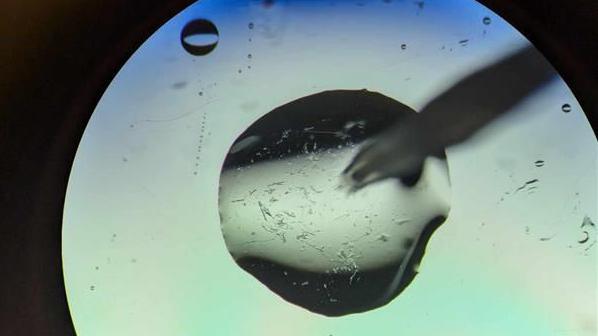Scientist uses cat whiskers in anti-viral research

The scientist revealed that cat whiskers had been used in crystallography for decades
- Published
A scientist is searching for cat whiskers to help with research into anti-viral drugs.
Megan Lambert, a postdoctoral researcher at Diamond Light Source in Harwell, Oxfordshire, posted her unusual request on Facebook.
"If you have a cat and you found some of their whiskers lying around after they fell naturally, I'd be very interested in getting some," her post read.
Dr Lambert said the crystals she studied were "usually really small", so the small and rigid cat whiskers optimise the experiments.
"I grow crystals of the proteins I study, which can be used to learn about their 3D structure," Dr Lambert explained.
She added that she was doing crystallography - a vital scientific method for understanding the properties of solid objects.
The scientist revealed that cats and even rabbit whiskers had been used in the field for decades.
"In my case, the proteins are from different viruses, and these crystals will be used as part of an effort to discover new anti-virals," she said.
Speaking to BBC Radio Oxford, she clarified that the cat whiskers are used as a tool, rather than a subject.
"[The crystals] are usually really small, so we need something very small to [optimise] our experiments," Dr Lambert said.
"I take the whiskers and put them them through a sample to transfer to another drop.
"We could technically use other things like hair, but cat whiskers are pretty nice because they are quite rigid."
She requested that people do not pluck their cats but try to find whiskers from their sleeping spots.
The idea behind her post was to meet up with people from the village to collect the whiskers.
Dr Lambert revealed that she had a donor now and had been "inundated" with cats whiskers.
"I didn't think that was so weird for people outside of the field, so it was quite funny."

Dr Lambert said the cat whiskers were used as a tool, rather than a subject
Get in touch
Do you have a story BBC Oxfordshire should cover?
You can follow BBC Oxfordshire on Facebook, external, X (Twitter), external, or Instagram, external.
- Published10 November 2014